Advancing Our Mission
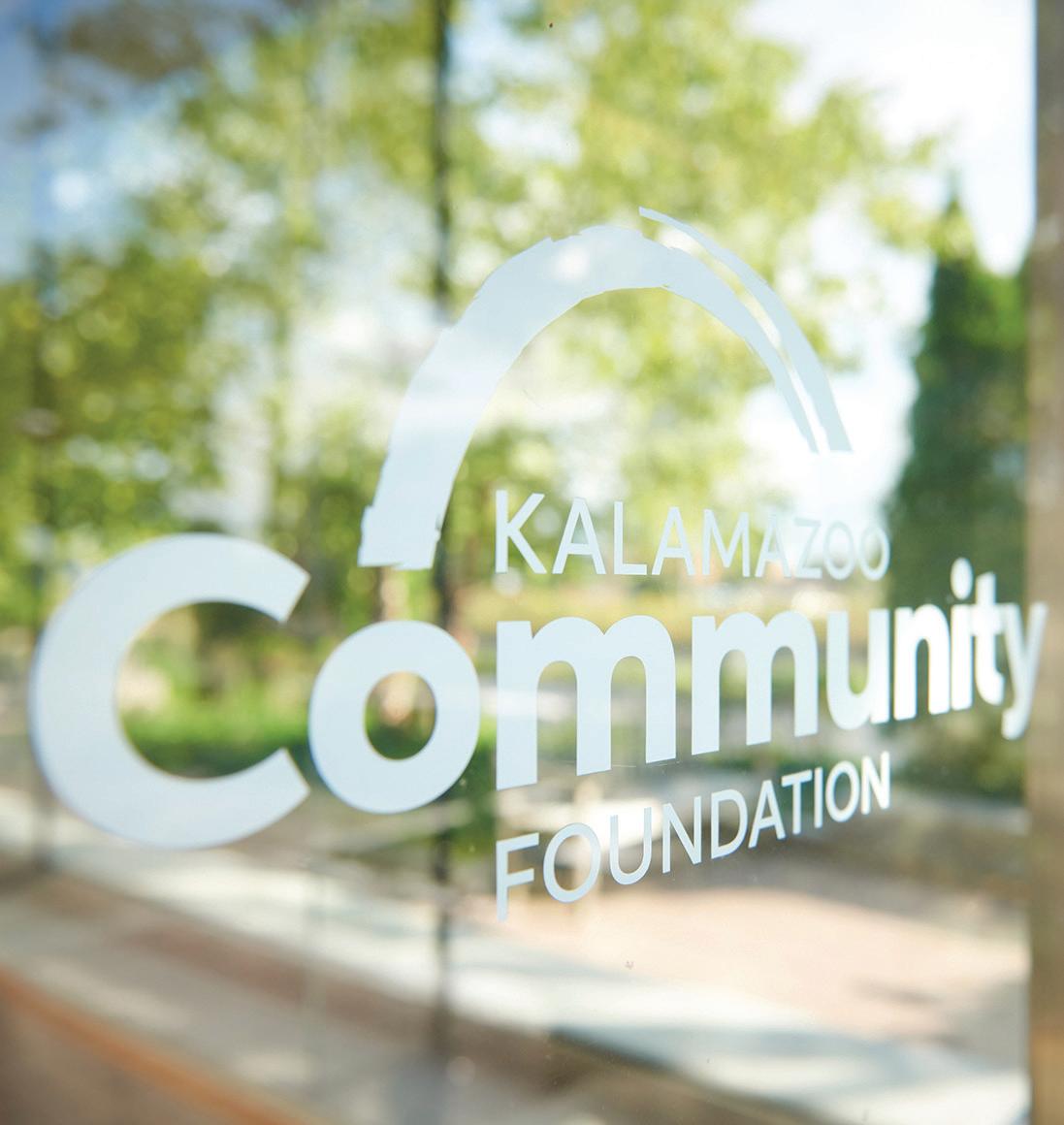
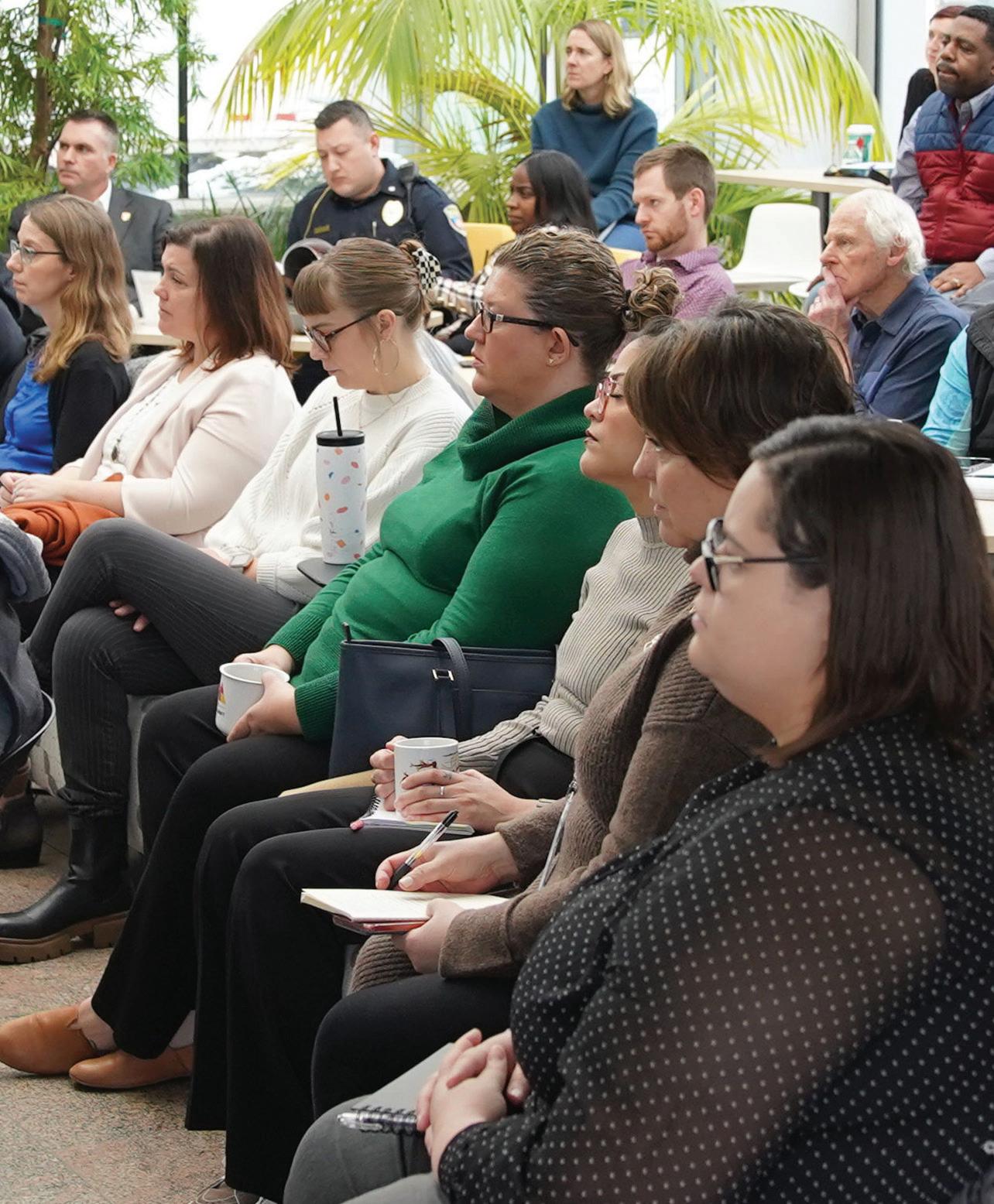
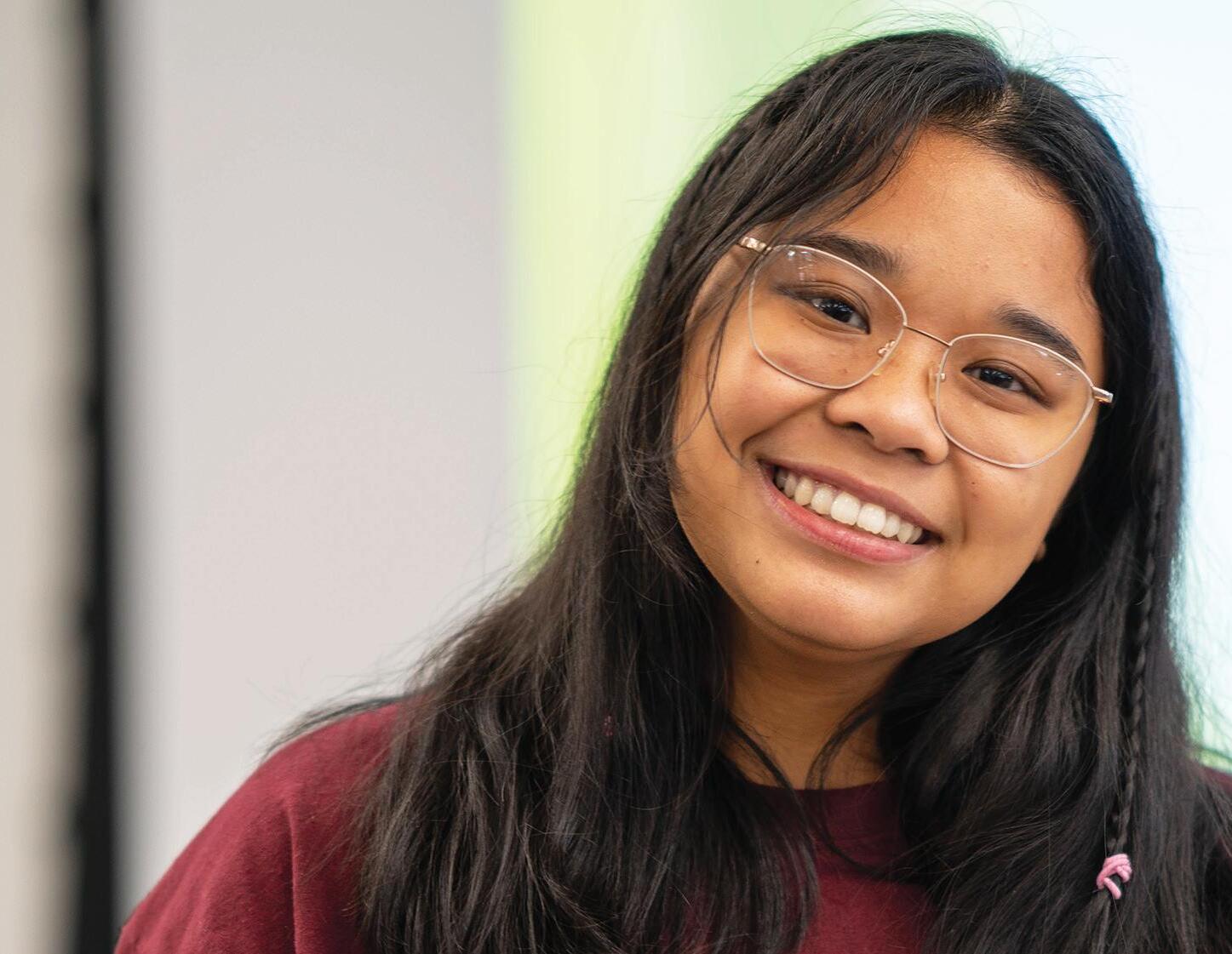

2022 ANNUAL REPORT
Board of Trustees
Von Washington, Jr., Chairperson
Amy Upjohn, Vice Chairperson
Dr. L. Marshall Washington, Treasurer
Artrella Cohn, Trustee
Jim Escamilla, Trustee
Dr. Jorge Gonzalez, Trustee
Si Johnson (2011-2022)
Kama Tai Mitchell, Trustee
Sydney Parfet, Trustee
Hon. Carolyn H. Williams (2009 – 2022)
New Members as of 2023
Lucas Mansberger, Trustee (2023)
Dr. Xiaoan Li, Trustee (2023)
Staff
Candice Atwater
Sandy Barry-Loken
Chaney Bear
Kari Benjamin Hamann
Robyn Bennett
Beth Berglin
Sue Bos
Lauren Boulton
Meredith Bradford
Stacey Charron-Milnikel
Terry Cropper
Joanna Dales
Jordan Duckens
David Feaster
Dr. Kenlana Ferguson
Kallista Fernanders
Carla Fernández-Soto
Joe Galaviz
Laura Galaviz
Beth Gregory-Wallis
Christa Hauke
Ebony Hemphill
Jennifer Heymoss
Erycka Hunter
Sarah Lee
Julie Loncharte
Tshepo Mathekga
Rhonda McGee
Valerie Mitchell
Sharayl Moore
Lina Mwema
Adrienne Neubert
Jasmine Oldham
Emily Olivares
Carrie Pickett-Erway
Lily Salas
Kururama Sanchez
Timothy Smolenski
Susan Springgate
Cindy Trout
Allie VanHeest
Frances Vicioso
Hollywood Watkins
Karen Young
New Staff as of 2023
Bekah Kreckman
Josh Sledge
Henry Toledo
Erika Whitehead
Kalamazoo Community Foundation (KZCF) Community Partners are listed on page 17.
KALAMAZOO COMMUNITY FOUNDATION | 2023 ANNUAL REPORT 2 Our Vision Kalamazoo County is the most equitable place to live. Give DONATE ONLINE Go to kalfound.org and click on the Give Now button. Mail a check Kalamazoo Community Foundation 402 East Michigan Avenue Kalamazoo, MI 49007-3888 Arrange a Planned Gift There are many ways for you to plan now for a gift later. Contact Donor Relations at donorrelations@kalfound.org or 269.381.4416 to learn more. Support We provide grant support to 501(c)(3) nonprofit organizations for work that aligns with our community investment priorities and will benefit residents of Kalamazoo County. We also provide scholarships for education beyond high school for Kalamazoo-area students. Learn more at kalfound.org. Connect linkedin.com/company/kalfound kalfound kalfound.org 269.381.4416 Our Mission Mobilizing people, resources and expertise to advance racial, social and economic justice.
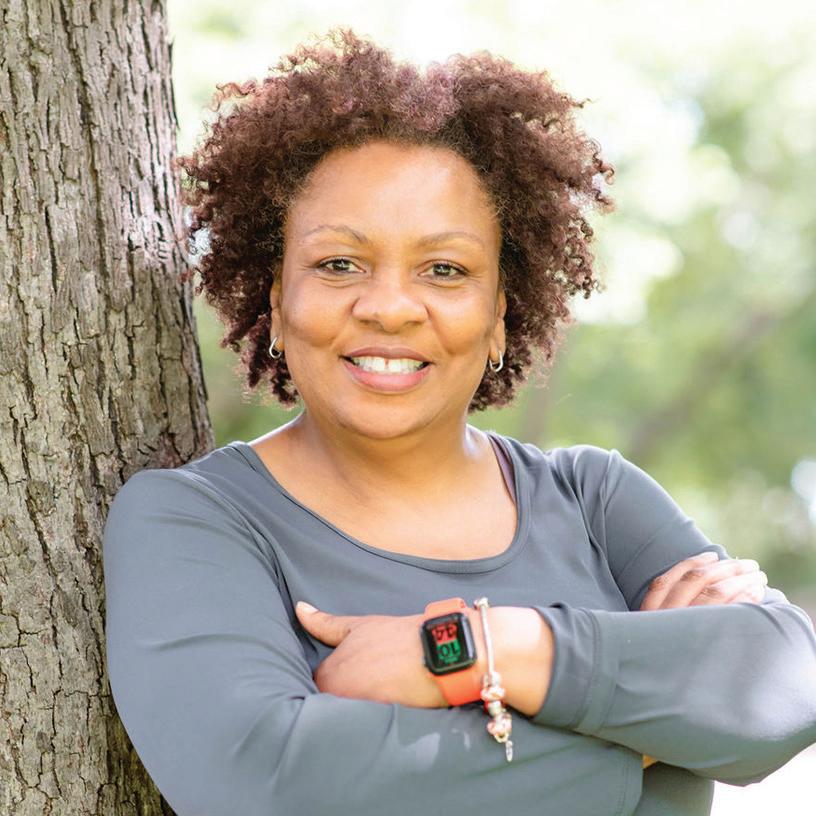

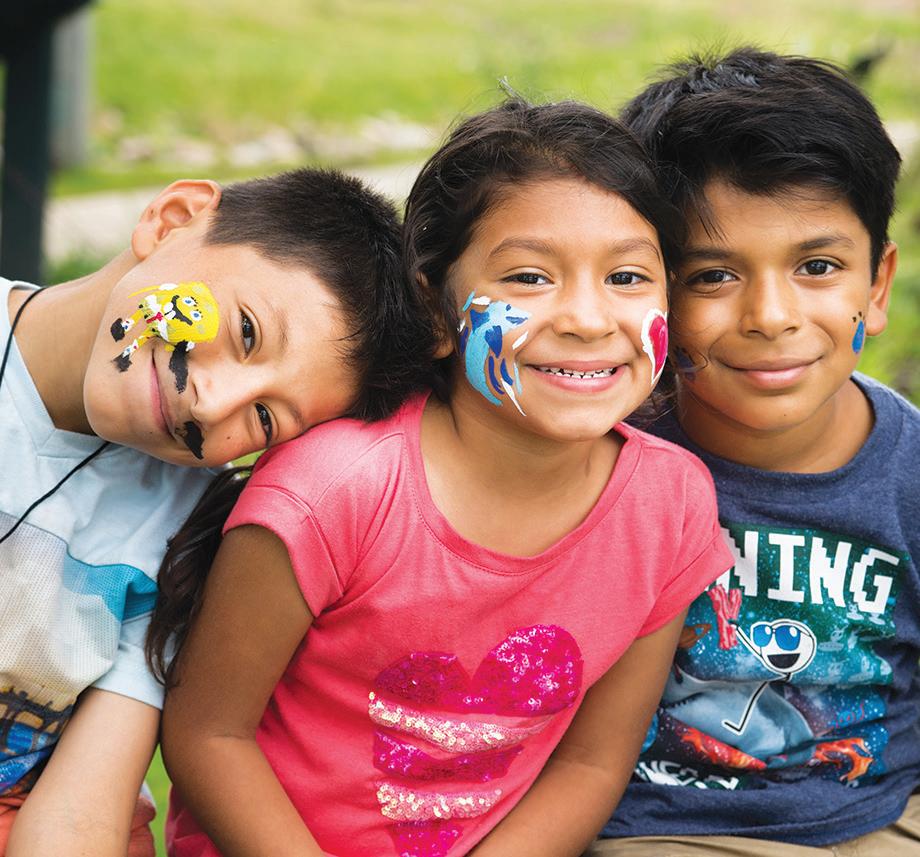
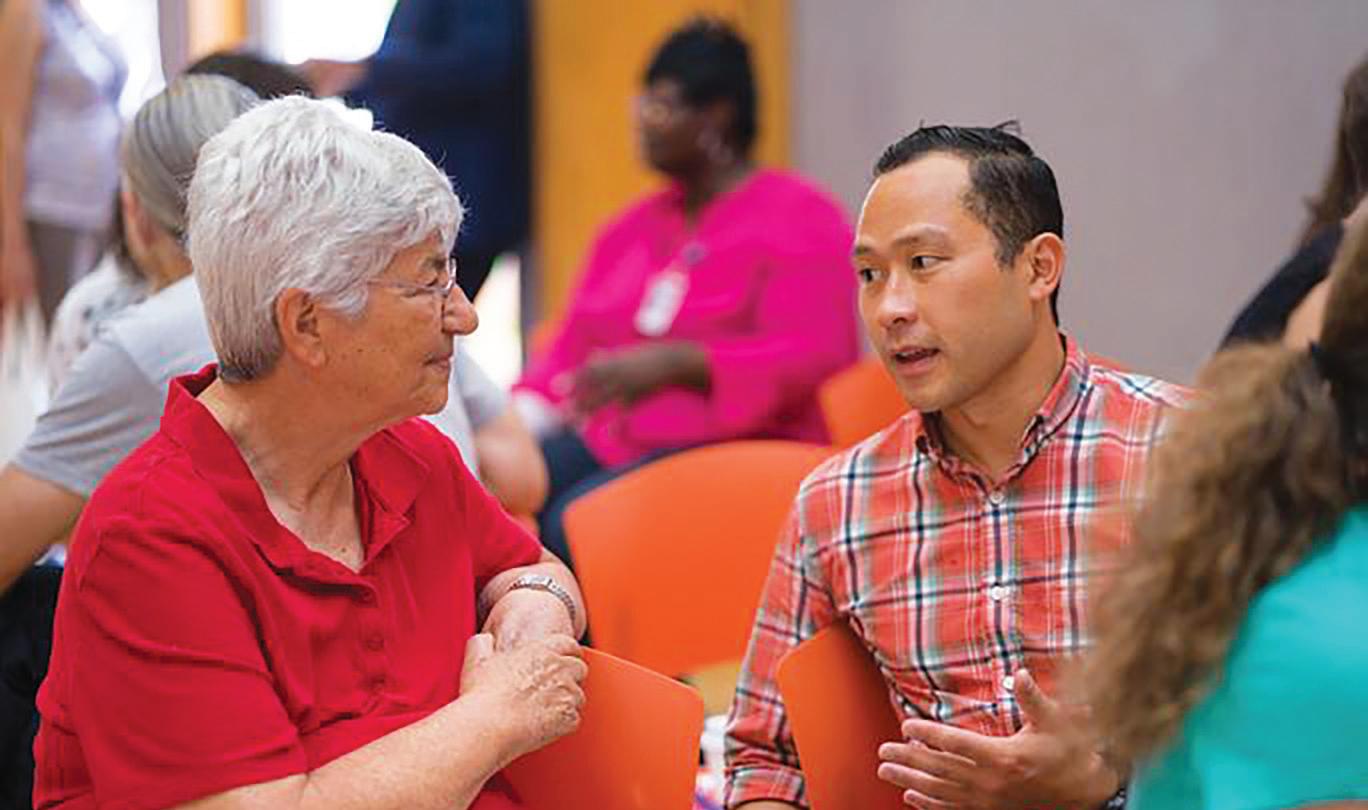
Storytelling Reimagined 11 Establishing a Blueprint 12 Power Moves 13 Why Our Joy Matters 14 Financial Statements 16 Investment Performance 17 In This Report Leadership Reflections 2
Leadership Reflections
KZCF Trustees
What events or stories in 2022 made you proud of the community and/or the work taking place at KZCF?
Jim Escamilla
I feel the announcement that KZCF was actively looking for a new CEO, along with the advancement of our DEI and racial healing framework is exciting.


Sarah Lee
Von Washington, Jr.
The Emergency Scholarship Fund is an amazing resource to assist with tuition and expenses. The Day of Racial Healing facilitated by TRHT for our community members was deeply impactful.
I am proud of the Southwest Michigan Journalism Collaborative’s completion of their first year collaborating to report on mental health. This project was supported by a grant from Solutions Journalism Network, where journalism collaboratives work on reporting on a specific community issue from a solutions journalism framework.
Kama Tai Mitchell

2022 was fast and intense. I joined the Board of Trustees, and we dove right into finding a new CEO for the Community Foundation. It was a great learning experience for me to assist with the search, and I was honored to be asked to participate.
Joanna Donnelly Dales
Lucas Mansberger

I am proud of the way KZCF continues to move our community forward in a dialogue on gun violence.
I am so proud of the work of our Scholarship Team, especially the innovation around the establishment of the Emergency Scholarship Fund. They saw an unmet need for our community’s students and developed the Emergency Scholarship Fund to help students get to the finish line.
Amy Upjohn
The work taking place in our community around gun violence is so important. KZCF’s commitment and leadership, along with that of our partners, is a wonderful example of the strong partnerships and collaborations that make our community great.
Erycka Hunter
Dr. Xiaoan Li

I am very proud of the fact that more and more individuals and organizations in our community have taken part in the Racial Healing Circles in 2022. The signature event, Expanding Our Horizons, which is provided for the Kalamazoo Police Academy, was so well-attended and received.
Jen Heymoss
KZCF reimagined its DEI efforts by focusing on equity, learning and culture. We are working diligently to build a culture of learning and belonging. We actively aspire to be a premier employer where all staff feels seen, heard and a sense of belonging.
Artrella Cohn
Sydney Parfet
The Racial Healing Circles have been an important opportunity for individuals to gather, connect and learn from one another about lived experiences. It allows new relationships to be made and connections to grow.

The ways in which funders (including KZCF) have truly embraced the values they stated in writing when it comes to inclusivity in funding is refreshing. The increased support to organizations led by and/or serving the BIPOC community is a sign of trust-based philanthropy in action.
Dr. L. Marshall Washington

I’m proud of our continued work as a convener around gun violence prevention. I’m proud of our work in growing the Emergency Scholarship Fund. I’m also proud that we have a framework for policy change that gives us a pathway for systemic change.
Hiring a new CEO for the organization and continuing to provide scholarship opportunities to local Kalamazoo County residents were certainly highlights in 2022.


 Amy Upjohn
Lucas Mansberger
Dr. L. Marshall Washington
Sydney E. Parfet
Dr. Jorge G. Gonzalez
Von Washington, Jr.
Kama Tai Mitchell
Artrella Cohn
Dr. Xiaoan Li
Jim Escamilla
Amy Upjohn
Lucas Mansberger
Dr. L. Marshall Washington
Sydney E. Parfet
Dr. Jorge G. Gonzalez
Von Washington, Jr.
Kama Tai Mitchell
Artrella Cohn
Dr. Xiaoan Li
Jim Escamilla
Joanna Donnelly Dales
The Emergency Scholarship Fund is a great demonstration of collaboration to advance our mission. All are working together to respond to the financial emergencies students face that may prevent them from continuing their education.
Dr. Jorge G. Gonzalez
Collaboration with community partners is at the heart of the Kalamazoo Community Foundation’s mission. Our Kalamazoo partners have an understanding of strategies that are likely to have the largest impact on the people they serve.
Dr. Xiaoan Li


Robyn Bennett
Collaboration affords us access to networks and specialized skills that an individual donor may not have on staff.
Collaboration with community partners is at the heart of the Kalamazoo Community Foundation’s mission. Our Kalamazoo partners have an understanding of strategies that are likely to have the largest impact on the people they serve.
Erycka Hunter

Active listening and learning are hallmarks of good collaboration. As a community foundation, it is our duty to center community voices to advance our mission.
Artrella Cohn
Jim Escamilla
I feel that collaboration is one of KZCF’s strengths. Being a convener of many organizations and sharing best practices, resources and ideas are at our core.
Karen Racette


True and effective collaboration requires diversity of identity as well as thought. Our mission of mobilizing people, resources and expertise to advance racial, social and economic justice is synonymous with collaboration.
Sarah Lee
Our work is cross-functional. We need support from all areas to keep processes flowing smoothly.
Advancing our mission toward equity and justice requires many collective solutions and partnerships, especially with those who are closest to the issues impacting our community. To catalyze solutions and foster partnerships, collaboration needs to be at the heart of our work. After all, the work of love is to produce justice.
Amy Upjohn
We can’t do it alone! Collaboration must include the whole community so that all voices are heard!
Dr. L. Marshall Washington
Jen Heymoss
We can’t do this work alone. Our most important work in advancing our mission is working towards de-siloing work across sectors.
Collaboration brings together multiple opinions and crucial conversations to arrive at an opportunity or idea that works for that moment in time. We get to embrace the opportunity or idea and begin to formulate plans that will positively impact others.
Lucas Mansberger
Collaboration is truly essential, not simply to maximize the positive impact of our community’s collective resources but to ensure that diverse perspectives and interests are represented in our work.
Kama Tai Mitchell



Many hands make light work. None of us are free until all of us are free.
Sandy Barry-Loken
Sydney Parfet
Von Washington, Jr.
It takes an entire community to realize the importance of assisting those in marginalized communities.
Our community is made up of several parts; KZCF must collaborate with as many sectors, groups, teams and individuals in the community to be successful in advancing our mission.
Collaboration is at the heart of all we do. We need collective power as we work toward systemic change, and that means we need the strengths and assets of everyone working to advance racial, social and economic justice.
3
Why is collaboration important for KZCF’s work in advancing its mission?
Robyn Bennett
Sandy Barry-Loken
Sarah Lee
Erycka Hunter
Jen Heymoss
Joanna Donnelly Dales
Karen Racette
Dr. Kenlana Ferguson
Strategy & Leadership Team
Planning for the Future
Unlocking the power of unrestricted giving
Building relationships grounded in trust is how we create systemic change. Establishing trustworthy relationships with our funded partners allows us to remove historical barriers to funding more efficiently by connecting community members to unrestricted resources and support. These meaningful, lasting relationships provide the foundation for us to make our community a place where everyone can thrive.
Early in 2020, KZCF began a shift toward trustbased philanthropy. Using this approach, which prioritizes those most affected by inequity, KZCF has transformed the power dynamic between funders and funded partners and streamlined the grantmaking process.
“The responsibility is on us to understand the work of our partners, as opposed to putting that burden on them,” said Sandy Barry-Loken, vice president of Community Impact & Investment.
“We’re hearing from partners that they feel more comfortable picking up the phone when things aren’t going well or when they need thought partnership. There’s a higher focus on learning and not on perfection.”
In 2017, Thomas Barr created the Robert W. and Marion S. Barr Fund in honor of his parents, who valued the power of literacy. Barr’s 30-year commitment to giving grows from his support of Unrestricted Funds and his belief that we can only create an equitable community if we do it together.

Love Where You Live Funding
The Love Where You Live Fund is adaptable and exists to fund areas with the greatest need. In 2020 and 2021, the top four funds remained the same. However, in 2022, we noticed a shift in the order of priority, indicating a shift in the needs of our community.
4
Thomas Barr KZCF Donor
$1,746,593 $1,923,593 $1,342,500 $1,237,000 $1,388,547 $1,907,000 $991,500 $986,500 $594,000 $756,800 $835,000 $641,260 $518,853 $569,500 $630,000 $886,440 $998,440 $1,107,440 2020 2021 2022 Education & Early Childhood Learning
“Everyone has a role to play, to do their part to make the community stronger.”
Education & Early Childhood Learning
Basic Needs/Human Services
Civil Rights, Social Action & Other Advocacy
Youth Development
Economic Development & Community Improvement


Other (Housing & Shelter; Health Care; Mental Health & Crisis Intervention; Arts, Culture & Humanities)
Between 2020 and 2021, KZCF provided more than $3.5 million in grants for education and learning through the Love Where You Live Fund. In 2022, education and learning needs came second only to basic needs and human services. This shift demonstrates the nature of change and the importance of adaptability in funding through unrestricted giving.

Vice President of Donor Relations & Scholarships
Joanna Donnelly
Dales understands the value of unrestricted giving and encourages funders to think long-term about their community investments.
“Unrestricted giving is the ultimate trustbased philanthropy,” Dales said. “We are calling into existence the true meaning of what it means to be a community foundation. We do this by pooling our resources, standing united as a collective and encouraging our funders to think strategically about the needs of our community members.”
Joanna Donnelly Dales Vice President of Donor Relations & Scholarships, KZCF
Bridging the Gap
A new approach to helping our students achieve scholarship success
Education empowers us to live lives of purpose, improve our economic status and create opportunities for others. As part of its commitment to ensuring that every student has access to these fundamentals, KZCF’s general scholarship application connects students to more than 50 funding opportunities. By establishing these connections, we are able to support students as they create new pathways to success.
Scholarships Manager Meredith Bradford said, “We are constantly seeking to identify what could most help students in applying. Helping them write an essay is at the top of the list.”
It was this call to action that inspired Bradford to connect with Dr. Kandace Lavender, executive director of Read and Write Kalamazoo (RAWK); Dr. Jonathan Bush, professor of English at Western Michigan University (WMU); and Trenae Dunigan, one of the coaches of Promise Pathway. Together, they designed an essay writing workshop series for high school students looking to apply for scholarships.
“There are youth in this community whose parents can afford to hire a tutor, and not all students have that same privilege,” Dr. Lavender said.
RAWK’s mission to celebrate and amplify youth voices helps students without access to these privileges explore their own experiences.
“Our job is to create a space where they feel comfortable and courageous enough to tell their story,” Dr. Lavender said.
Comfort inspires students to have the confidence that their stories are worth sharing. For Dr. Bush, this opportunity gave his teaching students a chance to engage in an exciting and collaborative approach to essay writing.

“It gave them the chance to put their ideals into practice and know that this is really their path,” Dr. Bush said. “It also allows WMU to serve our community more deeply.”
Identifying the students who would benefit most from this partnership was key to maintaining a
commitment to equity. The Kalamazoo Promise was able to make connections, provide space and offer support. For Dunigan, the collaboration offers students a “realistic approach to finding success as they transition out of high school.”


Workshop participant Artazijah Julian was so inspired by the experience she called on RAWK to create a scholarship for Black, African and African American students. It provides incoming first-year students $500 for textbooks.
“This program provided me, a woman of color, an opportunity to work with other individuals like me,” Julian said. “Kandace is an exceptional leader and an amazing support system.”
This collaborative workshop series makes it possible for everyone to serve more effectively by nurturing relationships and engaging in transformational work, together.
“Relationships drive change and grow communities, and what’s happening here is powerful,” Bradford said.

“The spirit of collaboration and partnership, that we’re stronger together, is the essence of this whole work.”
Photo credit: The Kalamazoo Promise
Dr. Kandace Lavender Executive Director, RAWK
7
Sustaining BIPOC Leadership
Prioritizing rest and restoration
Our shared humanity calls us to build a community where every person can be whole. Those who do the work of initiating change need space and support for their own healing and rejuvenation. Time with family, exercise, travel and rest are all necessary for a well-balanced life. By engaging in acts of restoration, our community leaders can be at their best when supporting community members.
Leaders of color — particularly women — do much of the heavy lifting of advancing racial equity. They are often volunteering more of their time, receiving less pay and working in under-resourced organizations, according to Alyssa Stewart, chief impact officer at United Way of South Central Michigan (UWSCM). Without sufficient organizational funding for health insurance or paid time off, black, indigenous, people of color (BIPOC) leaders face a higher risk of experiencing burnout, rapid turnover and trauma.
KZCF’s Sustaining BIPOC Leaders initiative provides funding for these leaders to access what they need to take care of themselves. By prioritizing their own well-being, they ensure that their work is sustainable.
“In the pandemic, so many needs came to the surface,” said Lily Salas, KZCF Community Impact & Investment Officer. “We saw the UWSCM release their Seeding Leaders initiative, and we learned from them.”
Through their Wellness Fund, the Stryker Johnston Foundation (SJF) also supports BIPOC leaders, “based on the emotional labor required for the work they do,” said SJF Grant Program & Partnerships Director Yolanda Lavender
The three funders collaborate by learning from one another and ensuring that, between them, a plethora of wellness needs are covered.
“Receiving a grant through the Sustaining BIPOC Leaders initiative allowed me to invest more in my physical and mental health. I’ve been able to purchase a gym membership and attend group workout classes. By staying active, I’ve relieved stress which has helped me feel more present with my family and manage work relationships better. This grant helped me invest in my personal care. Now, I can invest in others.”
Irving Daniel Quintero Gervacio Associate Director, El Concilio

8
“As all these supports coalesce together, we hope we will see a continued groundswell of more healthy, supported, whole leaders doing their critical work in community,” Stewart said.
The 28 recipients of KZCF’s Sustaining BIPOC Leaders grant used the funds this year for healing and wellness opportunities, time off, professional development and travel. Many reported the support helped them enjoy more time with their families, recover from empathy fatigue and reflect on the success of their efforts.
Dr. Charlae Davis, executive director of ISAAC, understands the importance of establishing healthy lifestyle routines in the midst of engaging in transformational work.

“The racism we are battling and inequitable systems we are trying to dismantle are toxic, and this work becomes heavy,” Dr. Davis said. “We encounter this simultaneously to the daily racism and ‘isms’ we face personally. Intentional opportunities for self-care without barriers are so needed.”
Dr. Davis considers self-care to be one way of engaging in radical resistance and encourages BIPOC leaders to shed any guilt that may arise from prioritizing it.
“I express my gratitude for receiving a grant through the Sustaining BIPOC Leaders initiative and the opportunity it afforded me to take some much-needed time away. Working in middle management at a nonprofit involves a lot of advocacy for my staff and their wellbeing. Unfortunately, my own needs are overlooked sometimes in the process. This grant helped bridge some of that gap.”
Pamela Hampton-Wright Supervisor, The Children’s Advocacy Center (Community Healing Centers)
9
Building a Better Foundation
How the community is supporting the next generation
Enjoying equitable access to education is a right that every child deserves. Children who are surrounded by a strong ecosystem of dedicated community members are often empowered to become critical thinkers and initiate generational change. By prioritizing early education, children are able to receive the care, engagement and support they need to develop healthy habits and a secure foundation.
It is for this reason that KZCF donor Laura Bell created the Laura S. Bell Equity in Early Childhood Fund. This field-of-interest fund is currently supporting the Early Learning Neighborhood Collaborative (ELNC). The organization provides year-round prekindergarten education for children in the Northside, Eastside and Edison neighborhoods.
“I had trust that KZCF knew where to put resources to help lift and support areas of Kalamazoo County that really need it,” Bell said.
For Bell, investing in the community meant being strategic about how to support long-term positive change. Her goal was to help improve the lives of community members in a way that would be transformative.

Sandy Barry-Loken, KZCF vice president of Community Impact & Investment, supports the collaborative’s comprehensive approach to investing in early learning education.
“By centering racial equity and using a multi-generational approach, ELNC is shifting
Laura Bell KZCF Donor
the early childhood education system, ensuring relevant, culturally competent early care and education for children and their families,” she said.
Dr. Nkechy E. Ezeh, founder and CEO of ELNC, said KZCF’s commitment to early childhood education for vulnerable children provides funding, time, mentorship and leadership, all of which contribute to long-term systems change.
The Laura S. Bell Equity in Early Childhood Fund supports free access to prekindergarten programming in the Kalamazoo community. As she continues her support of the collaborative, Bell is hopeful about what the future holds for the next generation of community members.

“I am really grateful to be able to support this programming and excited to give back to a community that has given me so much.”
Storytelling Reimagined Reducing harm through narrative change
The conversations we have about our community impact our collective well-being. Telling complete and complex stories is vital to advancing racial, social and economic justice. To achieve equity, our news and information ecosystem must be diverse.
The Southwest Michigan Journalism Collaborative (SMJC), funded in part by KZCF and the Solutions Journalism Network, brings together 12 regional media outlets to change our community narrative.

With a focus on issues affecting mental health, SMJC takes a solutions-oriented approach to journalism, telling the stories of how communities are addressing challenges, rather than spotlighting deficits.
“If we’re only telling stories of crime and poverty when talking about communities with majority BIPOC members, we are perpetuating narratives that cause harm,” said Sarah Lee, KZCF vice president of Marketing Communications.
That harm can cause economic and philanthropic disinvestment, further injuring those who are already marginalized.
Due to the collaborative’s innovative approach to reporting, it has encouraged BIPOC community members to prioritize their mental health and seek mental health services when needed. The collaborative has also inspired greater trust between reporters and the community members featured in their content. This reimagined vision of storytelling empowers
partners who might normally be competitors to share ideas and sources. Articles are also offered in English and Spanish.
“These efforts are all in service to the people of Southwest Michigan, many of whom are in virtual news deserts,” said Melinda Clynes, SMJC project manager and editor
Jesus Grillo, journalist and co-publisher of New/Nueva Opinión, said the project “fosters an environment of reflection and continuous learning that enhances the quality of the information generated.”
The collaborative strives to cultivate more diverse sources and newsrooms, promote equity in coverage and build trust between the media and the community. SMJC is listening, learning and reporting to help foster a happier, healthier Kalamazoo.
11
Photo: Solutions Journalism Summit
Establishing the Blueprint
A new approach to battling gun violence
We want our community to be a place where everyone is safe from harm and has the opportunity to grow and thrive. Achieving safety for all requires an engaged and connected community.
In the fall of 2021, both the city and county of Kalamazoo declared gun violence a public health crisis. Jen Heymoss, vice president of Initiatives & Public Policy, sees that shift as a necessary step toward addressing the prevalence of gun violence and finding sustainable solutions.
“A public health approach connects gun violence to the social determinants of health,” Heymoss said. “We’re looking for upstream interventions, and that’s what a public health approach does.”
Social determinants of gun violence can include trauma, poverty and a lack of access to education and mental health care. To address these factors, KZCF adopted the Blueprint for Peace, a gun violence prevention model created by Reggie Moore, director of Violence Prevention Policy and Engagement for the Medical College of Wisconsin. Devised with input from his community, Moore’s model was effective in reducing gun violence in the project’s birthplace, Milwaukee.
“We can’t piecemeal our way out of this,” Moore said. “We can’t say, ‘Okay, we’re going to give $10 for violence prevention and continue to give $100 million for cops, courts and cages.’ At the end of the day, there has to be an equitable investment if
Reggie Moore Director, Violence Prevention Policy and Engagement for the Medical College of Wisconsin
we are truly serious about addressing this comprehensively.”
Captain Stacey Ledbetter, one of the community leaders who joined the learning group for this initiative, was pleased to see everyone working together to achieve a collective goal.
“It was confirming to see that other community members know that collaboration is essential and that it is important to get personal testimonies and suggestions from those with lived experience,” Ledbetter said.


In accordance with Moore’s model, KZCF understands that implementing long-term solutions to the issue of gun violence in our community is a collaborative and ongoing effort.
Blueprint for Peace Facilitators
Gwendolyn Hooker HOPE Thru Navigation
Ed Genesis Speak It Forward
Tami Rey Kalamazoo County Commissioner
Stacey Ledbetter Black & Blue Networking & Consulting, LLC
Dr. Charlae Davis ISAAC
Tia Whitley Gryphon Place
Stacy Jackson Kalamazoo Public Library
Dr. Kenlana Ferguson
KZCF
Stephanie Hoffman City of Kalamazoo Commissioner
Jennifer Heymoss
KZCF
Emily Olivares KZCF
Reggie Moore quotes courtesy of “The solutions are in this room,” by Mark Wedel as published in Second Wave Media.
Photo: Gun Violence Prevention Network members
“Every system, every role, every organization and institution –everybody has a role to play.”
Power Moves
Amplifying the reach of the social justice collective
Grassroots efforts are the life force of systemic change. Community members are often the ones who identify injustice and initiate the work of rebalancing power. To do this work effectively, community members need access to tools and resources that will amplify their efforts.
In 2018, Mia Henry of Freedom Lifted and Matt Lechel of ONEplace, met with local organizations to explore the idea of a justice hub.
Shortly after, they presented their ideas to local funders, including KZCF. In 2020, the Community Impact & Investment team began exploring solutions for aiding grassroots groups. The Justice Hub (Hub), which began as an internal initiative of KZCF, is now a funded partner preparing to operate as its own nonprofit in the summer of 2023.
The Hub will provide fiscal sponsorship, incubation and support services for grassroots projects addressing systemic oppression in Kalamazoo County. It will also serve as a central organizing space for social justice leaders.

“Removing barriers and lowering overhead will make space for more impact, creativity and bold work,” said Bailey Mead, lead consultant and project director for the Hub.
The Hub aims to empower community members who have long carried the weight of being advocates for change without the proper support or resources.
The Hub is committed to expanding capacity by redefining and redistributing power. By using the strength of the collective, the Hub seeks to advance racial justice.
13
“Removing barriers and lowering overhead will make space for more impact, creativity and bold work.”
Bailey Mead
Project Director, Justice Hub
Why Our Joy Matters
A conversation about healing across generations
Transforming our community into a place of liberation takes heart change. Learning from one another through the stories we tell inspires that change. Recognizing our shared history of racial inequity can unite us in reforming the systems that maintain it. By engaging in this work together, we have an opportunity to share our truths, invest in collective healing and establish stronger connections that will further unite us.
Truth, Racial Healing & Transformation Kalamazoo (TRHT) is a powerful framework for advancing justice. It is our community’s only permanent endowment for sustaining efforts to dismantle racial inequities.
In 2022, TRHT initiated the kinds of conversations that move us toward progress. By training racial healing practitioners and hosting Racial Healing Circles, TRHT creates spaces for community members to be vulnerable.

“Our goal is to be an active listener, a deeper listener,” said Emily Olivares, Director of Initiatives, Racial Healing. “We want to listen to understand, not to respond.”
This approach to listening aligns the mind and heart, empowering us to work intergenerationally and interracially to create change that lasts.
“We are grounding our roots, and we are here to stay,” Olivares added.
On the National Day of Racial Healing, TRHT held a celebration themed Our Joy Matters: Healing Across Generations. Community members gathered at the Kalamazoo State Theatre to honor the wisdom of those who create communities where all are welcome. The event highlighted many community voices and showcased the work of youth artists.
The TRHT framework guides the work of KZCF through community-led collaboration. The partners who make up KZCF’s design teams come from all sectors of the community and work together toward actionable change in areas such as housing, poverty, education and law. Their learning from one another informs KZCF’s initiatives and direction in public policy.
Photo: TRHT Racial Healing Workshop
“A community foundation can be the heart of the community, but it also has a lot of power,” said Frances Vicioso, Initiatives & Public Policy officer and liaison to TRHT’s education and housing design. “TRHT helps us to leverage that power in support of other people and invite others to share that power.”
Through heart change, narrative change and building deep, authentic relationships, TRHT provides a methodology for using power for the good of all.

Beth Berglin, Initiatives & Public Policy officer and liaison to TRHT’s law design team, said of TRHT’s empowering force, “It’s the way to change hearts and it’s the way to change systems.”

“Our goal is to be an active listener, a deeper listener. We want to listen to understand, not to respond.”
Emily Olivares Director of Initiatives, Racial Healing, KZCF
15
Photo: Expanding Our Horizons Program with Kalamazoo Valley Community College Police Academy Cadets
Combined Statement of Financial Position
2022 COMBINED STATEMENT OF ACTIVITIES
Kalamazoo Community Foundation’s audited financial statements as of December 31, 2022, are available online at kalfound.org/about/investment-information/
AS OF DECEMBER 31, 2022 2021 2022 ASSETS Cash and investments 666,852,174 558,439,325 Contributions and pledges receivable 5,118,260 3,702,705 Beneficial interest in charitable perpetual trusts 13,866,912 11,043,886 Other assets 5,979,779 6,480,355 Total Assets 691,817,125 579,666,271 LIABILITIES AND NET ASSETS Funds held as agency endowments 36,827,196 30,717,771 Other payables 5,810,784 5,384,493 TOTAL LIABILITIES 42,637,980 36,102,263 TOTAL NET ASSETS 649,179,145 543,564,008 TOTAL LIABILITIES AND NET ASSETS 691,817,125 579,666,271
REVENUES Public support 11,979,091 10,137,167 Dividends and interest 11,550,128 15,801,326 Net gain (loss) from investment transactions 87,808,144 (102,698,815) Other income (loss) 1,142,465 (26,160) TOTAL REVENUE 112,479,827 (76,786,482) EXPENSES Grants paid 19,679,677 19,927,797 Investment management fees 978,918 932,001 Program services 2,103,049 2,007,631 Donor relations and development 1,329,062 3,895,731 Administrative and general expenses 3,175,708 2,065,495 TOTAL EXPENSES 27,266,414 28,828,655 CHANGE IN NET ASSETS 85,213,413 (105,615,137) ENDING NET ASSETS 649,179,145 543,564,007
16
Investment Performance
1The Moderate Growth Benchmark is a staged index composite benchmark that has the current composition of the Barclays US Aggregate Bond Index (15%); Barclays US Treasury 5-10 Yr TR USD (10%); DJ US Slect REIT index (2.5%); MSCI EAFE Small Cap Index (10%); MSCI Emerging Markets Value Index (10%); Russell 1000 Value Index (5%); Russell 2000 Value Index (10%); Russel Micro Cap Index (5%); S&P 500 Index (30%); and the NCREIF Fund Index ODCE (2.5%). 2The Socially Responsible Investment (SRI) Performance Benchmark is 70% equity benchmark and 30% fixed income benchmark. The equity benchmark is Standard & Poor’s Index (75%); MSCI EAFE Index (15%); and MSCI Emerging Markets Index (10%). The fixed income benchmark is the Bloomberg Barclays Intermediate Government/Credit Index.
KZCF Community Partners
Emeritus Council
Barbara James, Chair
Jeff DeNooyer
Louis Felton
Mary Harper
David Hatfield
Jack Hopkins
Si Johnson
Howard Kalleward
Beverly Moore
Juan Olivarez
Frank Sardone
Rhonda Stryker
Betty Upjohn-Mason
Don Vander Kooy
Eileen Wilson-Oyerlaran
Hon. Carolyn H. Williams
Professional Advisor Council
Nicole Asher
Nicholas Boyd
Mark Denenfeld
Erin Gallagher
Philip Hamilton
Darlene Hybels
Kevin Jawahir
William Millard
Sabrina Pritchett-Evans
Nancy Springgate Kushner
Tyler Stewart
Jack Ullrey
Andrew Vorbrich
Other committees and teams
Anti-Racism Transformation Team (ARTT)
Kari Benjamin, Co-Chair
Kallista Fernanders, Co-Chair
Beth Gregory-Wallis, Co-Chair
Remius Jones, Co-Chair
Lenore Yaeger, Co-Chair
Sandy Barry-Loken
Sharon Brown
Kendall Campbell
Artrella Cohn
Carla Fernandez-Soto
Byron Foster
Jen Heymoss
Stephanie Hoffman
Erycka Hunter
Lissette Mira-Amaya
Emily Olivares
Kat Owens
Sara Stockinger
Christopher Terkos
Amy Upjohn
Finance Investment Committee
Dean Bergy
Dan DeMent
Sandi Doctor
Randy Eberts
Nick Griffith
Si Johnson
Robert Salisbury
Josh Sledge
Truth, Racial Healing & Transformation
(TRHT) Kalamazoo Leadership Team
Sara Carroll-Muniz
Caren Dybek
Denise Evans
Ed Genesis
Gabriel Giron
Patrese Griffin
Tobi Hannah-Davies
Stephanie Hoffman
Yolonda Lavender
Stacey Randolph Ledbetter
Dr. Xiaoan Li
Katina Mayes
Kama Mitchell
Dr. Regena Nelson
Fernando Ospina
Lenore Yaeger
Impact Investment Committee
Jim Escamilla, Chair
Matt Hollander
Jen Hsu-Bishop
Stacy Jackson
Mattie Jordan-Woods
Joe Kiser
Matt Lechel
Lucas Mansberger
MeLisa Zackery
More than 150 community members also serve on our scholarship committees, TRHT Design Teams, LGBTQ Equality Fund and Love Where You Live Environmental Fund committees.
Community Investment Committee
Amy Upjohn, Chair
Angelita Aguilar
Sojn Boothroyd
Artrella Cohn
Jim Escamilla
Byron Foster
Lissette Mira-Amaya
Sydney Parfet
Youth Advisory Council (YAC)
Gracie Breitenbach
Ella Cox
Lauryn Crawley
Ella Harris
D’Nasia Hemphill
Venus Jefferies
Grace Johnson
Janashia Jones
Danielle Kwon
Alex Lee Lanting
Mallory Loken
Jessica Torres Martinez
Clara Moss
Victoria Oropreza
Meghan Peot
Annalise Ransom
Fayyaz Razi
Q4 1 Year 3 Years 5 Years 7 Years 10 Years Moderate Growth Actual 8.1 -12.2 4.5 4.7 7.3 7.5 Benchmark1 7.2 -15.0 3.2 4.4 6.9 7.0 Socially Responsible Investment Performance Actual 5.8 -19.2 2.3 N/A N/A N/A Benchmark2 7.8 -17.8 7.6 N/A N/A N/A
17
402 East Michigan Avenue
Kalamazoo, MI 49007-3888
269.381.4416 kalfound.org
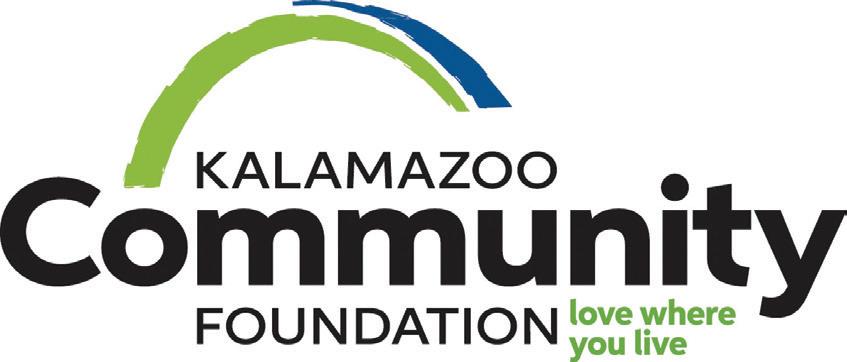
Nonprofit Organization U.S. Postage PAID Kalamazoo, MI Permit Number 66


















 Amy Upjohn
Lucas Mansberger
Dr. L. Marshall Washington
Sydney E. Parfet
Dr. Jorge G. Gonzalez
Von Washington, Jr.
Kama Tai Mitchell
Artrella Cohn
Dr. Xiaoan Li
Jim Escamilla
Amy Upjohn
Lucas Mansberger
Dr. L. Marshall Washington
Sydney E. Parfet
Dr. Jorge G. Gonzalez
Von Washington, Jr.
Kama Tai Mitchell
Artrella Cohn
Dr. Xiaoan Li
Jim Escamilla




























